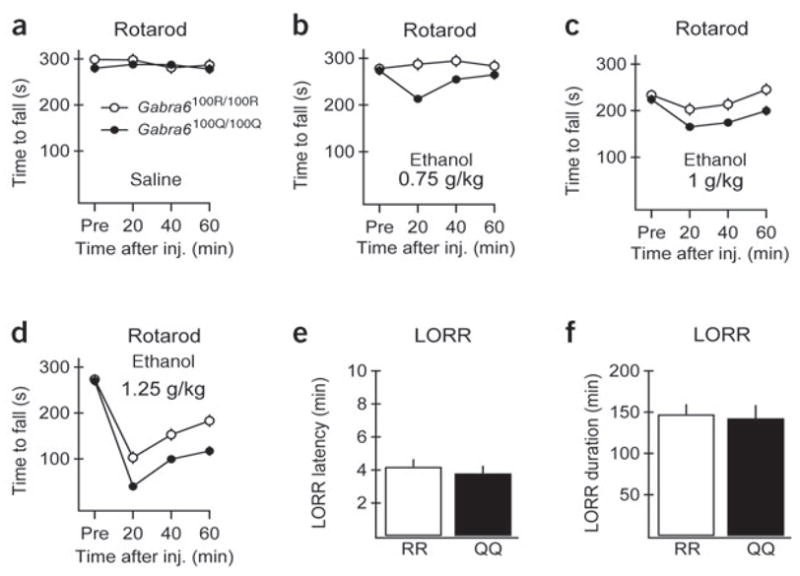Figure 5.

Rats homozygous for the α6-100Q polymorphism show increased alcohol-induced motor impairment as compared with Gabra6100R/100R rats. Motor coordination was assessed by testing Gabra6100R/100R (open circles) and Gabra6100Q/100Q (filled circles) rats in an accelerating rotarod test. (a–d) Performance was measured as the latency to fall from the rotating rod before (‘Pre’) and 20, 40 and 60 min after intraperitoneal injection of saline (a; n = 5 rats each group), 0.75 g kg−1 (b, n = 7 and 8 rats for Gabra6100R/100R and Gabra6100Q/100Q, respectively), 1 g kg−1 (c; n = 6 and 7 rats for Gabra6100R/100R and Gabra6100Q/100Q, respectively) or 1.25 g kg−1 ethanol (d; n = 8 rats each group). Tests on the three postinjection data points yielded the following statistics: saline controls, Gabra6100R/100R versus Gabra6100Q/100Q: F2,7 = 0.50, P = 0.63; 0.75 g kg−1 ethanol, Gabra6100R/100R versus Gabra6100Q/100Q: F2,12 = 6.66, P = 0.011; 1 g kg−1 ethanol, Gabra6100R/100R versus Gabra6100Q/100Q: F2,10 = 5.41, P = 0.026; 1.25 g kg−1 ethanol, Gabra6100R/100R versus Gabra6100Q/100Q: F2,13 = 135.6, P < 0.001. (e,f) Latency (e) and duration (f) of LORR was determined after intraperitoneal injection of 3 g kg−1 ethanol (n = 9 for each group) and did not differ in Gabra6100Q/100Q versus Gabra6100R/100R rats (P = 0.51 for LORR latency, P = 0.81 for LORR duration).
